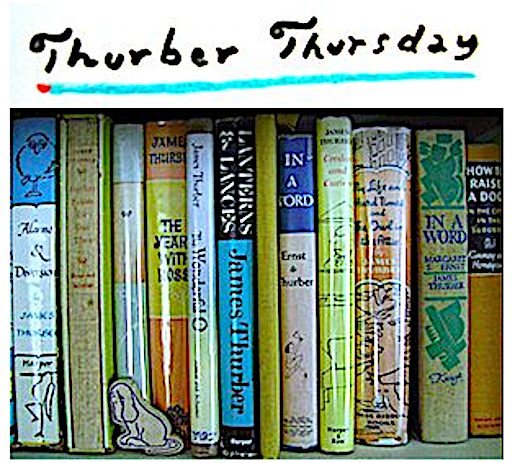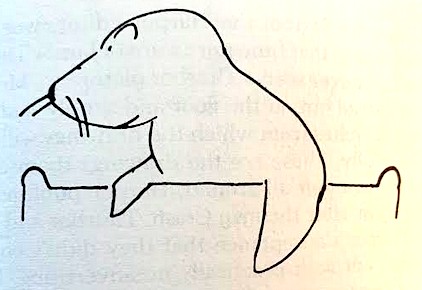“Thurber is The New Yorker‘s most important writer.” So said Dwight Macdonald in the Partisan Review way way back in 1937. Whether you agree or not, it’s an interesting declaration. What’s more interesting, is what else Mr. Macdonald had to say about Thurber:
“In general, his treatment of the classic New Yorker comic theme (which he, more than anyone else, originated) often transcends realistic observation to reach an absolute, personal fantasy…his My Life and Hard Times…contains the best humor of the entire post-war period.”
I like “absolute, personal fantasy” an awful lot. While I don’t go digging into what makes cartoons click, I believe that one can be a terrific draftsman — someone who can really draw — but deliver work that’s as interesting as a six day old pancake. And then there are those artists who bend the craft, or ignore it — while giving us something we’d never seen before. A whole lot of people can draw very well, but few can imagine a seal in a bedroom. I’ve always loved this passage from Thurber’s The Years With Ross. Here he talks about his college-era drawings that appeared in Ohio State’s humor magazine, the Sun-Dial:
“Some of the Sun-Dial drawings were about the same as those I had done for the New Yorker, but others were elaborate arrangements of solid black and crosshatching. When White caught me trying this same style again one day, he spoke a sound word of warning that has gained a small deserved fame: ‘Don’t do that. If you ever got good you’d be mediocre.'”
_______________________________________________________

James Thurber Born, Columbus, Ohio, December 8, 1894. Died 1961, New York City. New Yorker work: 1927 -1961, with several pieces run posthumously. According to the New Yorker’s legendary editor, William Shawn, “In the early days, a small company of writers, artists, and editors — E.B. White, James Thurber, Peter Arno, and Katharine White among them — did more to make the magazine what it is than can be measured.”
Key cartoon collection: The Seal in the Bedroom and Other Predicaments (Harper & Bros., 1932). Key anthology (writings & drawings): The Thurber Carnival (Harper & Row, 1945). There have been a number of Thurber biographies. Burton Bernstein’s Thurber (Dodd, Mead, 1975) and Harrison Kinney’s James Thurber: His Life and Times (Henry Holt & Co., 1995) are essential. Website


